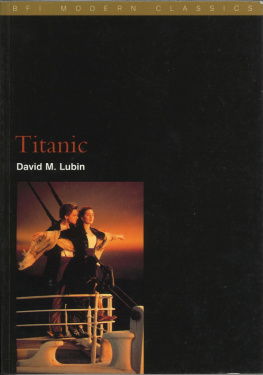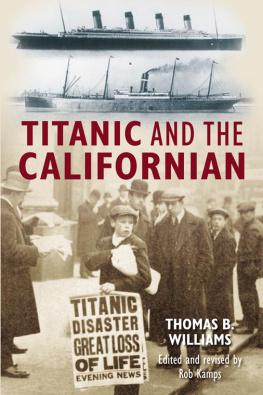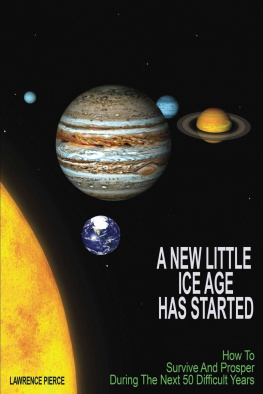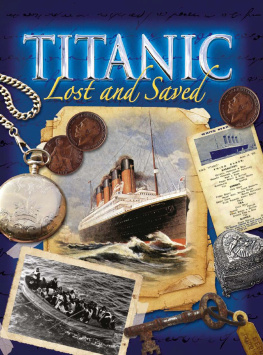Nicola Pierce - Titanic
Here you can read online Nicola Pierce - Titanic full text of the book (entire story) in english for free. Download pdf and epub, get meaning, cover and reviews about this ebook. year: 2018, publisher: The OBrien Press, genre: History. Description of the work, (preface) as well as reviews are available. Best literature library LitArk.com created for fans of good reading and offers a wide selection of genres:
Romance novel
Science fiction
Adventure
Detective
Science
History
Home and family
Prose
Art
Politics
Computer
Non-fiction
Religion
Business
Children
Humor
Choose a favorite category and find really read worthwhile books. Enjoy immersion in the world of imagination, feel the emotions of the characters or learn something new for yourself, make an fascinating discovery.
- Book:Titanic
- Author:
- Publisher:The OBrien Press
- Genre:
- Year:2018
- Rating:3 / 5
- Favourites:Add to favourites
- Your mark:
- 60
- 1
- 2
- 3
- 4
- 5
Titanic: summary, description and annotation
We offer to read an annotation, description, summary or preface (depends on what the author of the book "Titanic" wrote himself). If you haven't found the necessary information about the book — write in the comments, we will try to find it.
Titanic — read online for free the complete book (whole text) full work
Below is the text of the book, divided by pages. System saving the place of the last page read, allows you to conveniently read the book "Titanic" online for free, without having to search again every time where you left off. Put a bookmark, and you can go to the page where you finished reading at any time.
Font size:
Interval:
Bookmark:
For Titanic buffs
And for Niall Carney
The author would like to extend her gratitude to the following for assistance and their generosity in research: Titanic historians and authors Randy Bryan Bigham, Steve Hall and Bill Wormstedt, Straus Historical Society (Executive Director Joan Adler), Southampton FC (Official Historian to SFC, Duncan Holley), Julie Stoner at the Library of Congress and Zoe Rainey who kindly checked out graveyards for me on her New York holiday.
I also wish to thank The OBrien Press for asking me to write this book. As always, I must thank my tireless editor, Susan Houlden, for all her help and encouragement. I depend on her sharing my passions, book to book, and she never fails me.
The fact that this book looks good is absolutely nothing to do with me; once again Im grateful for the artist that is Emma Byrne. I can only hope the book is as good as it looks. Also, I hasten to add, any mistakes are entirely mine.
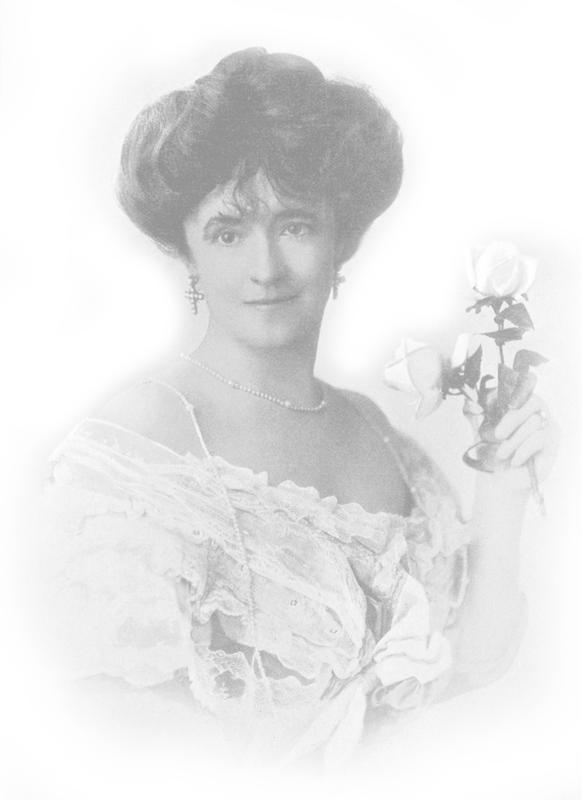
R MS Titanic changed my life with the release of my childrens novel Spirit of the Titanic. The tragedy is narrated by the spirit of the first victim associated with Titanic, a fifteen-year-old catch-boy, or junior riveter, Samuel Joseph Scott who was working on the building of the great ship in the Harland & Wolff shipyard. On 20 April 1910, Samuel fell twenty-three feet to his death from a ladder propped against the side of the ship. I had no idea that the research I had undertaken for the novel and the novel itself would result in my spending the next six years crisscrossing the island of Ireland, including a jaunt to the Irish college in Paris, talking to students of all ages, teachers, librarians and parents about Titanic. I have been ambushed by four-year-olds determined to show me their Titanic portraits, while older and elderly Titanic enthusiasts have shared their own research and connections with me.
Over the years, many theories have been explored as to the cause of the sinking, including that of a fire in Boiler Room 6. During my talks, I have been asked a lot of questions about the ship, some I could answer and some I could not. My publisher wanted an accessible, affordable history book, which presented me with a huge challenge as I sifted through the mound of information available, needing to cram in as much as I could, in as few words as possible. Admittedly, some of the stories will be familiar; however, I learned a lot during the research and I hope that the reader might share my experience.
Titanics wreck still lies in two sections on the floor of the Atlantic Ocean, while over in China a replica is being built at the Romandisea Seven Star International Cultural Tourism Resort. Their Facebook page already has over 900,000 followers, who avidly comment on the new build via the regularly updated photographs.
Over a century after its fateful journey to the bottom of the sea, this ship, her crew and passengers continue to enthral young and old.
Nicola Pierce
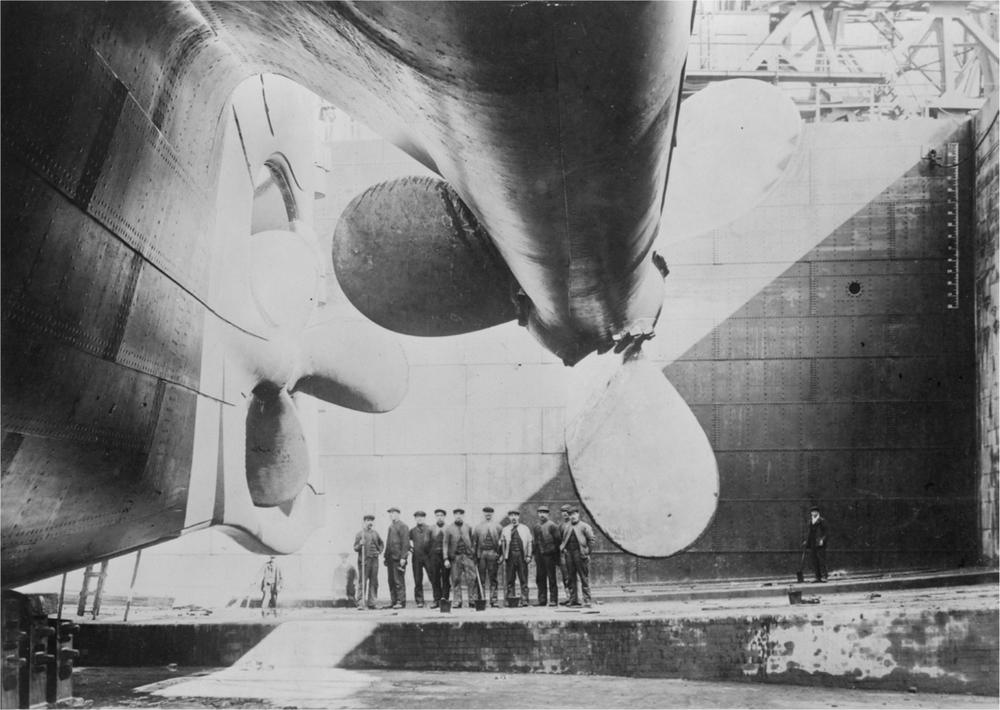
Titanics gigantic propellers.

One of our most familiar images of Titanic, under construction in Harland & Wolff.
HOW IT ALL BEGAN
O ut on the seas in the early years of the twentieth century the Cunard Line held supreme, with the much-loved ships, Lusitania and Mauretania, the biggest, fastest and most lavishly built ships the world had ever seen. In 1907 the number of immigrants travelling to a new life in America totalled a new high at 1.25 million.
There was much money to be made and stiff competition to stir ambition into being. In 1907, Mr Joseph Bruce Ismay, chairman of the White Star Line, and his wife, Florence, were invited to dinner at Downshire House, the London home of Lord Pirrie, chairman of Belfasts Harland & Wolff shipyard. We may assume that the premise of this dinner was to initiate changes that would prove beneficial to both companies.
Bruce Ismay was also president and managing director of IMM (International Mercantile Marine Company), the American holding company that had bought the shipping White Star Line in 1902.
The entrepreneurial swagger behind the IMM was undoubtedly John Pierpoint (JP) Morgan, the crusading powerhouse whose nose for profit had brought him to the waters edge. As an American, he was not allowed to own British ships, but there was nothing to prevent his holding company from owning the company that owned the British ships. In typical fashion, Morgan wished to buy out and thus dominate the relatively new world of the transatlantic liner. Along with White Star Line, he had briefly attempted to buy the Cunard Line but was thwarted by the British government who feared an American monopoly of the North Atlantic trade.
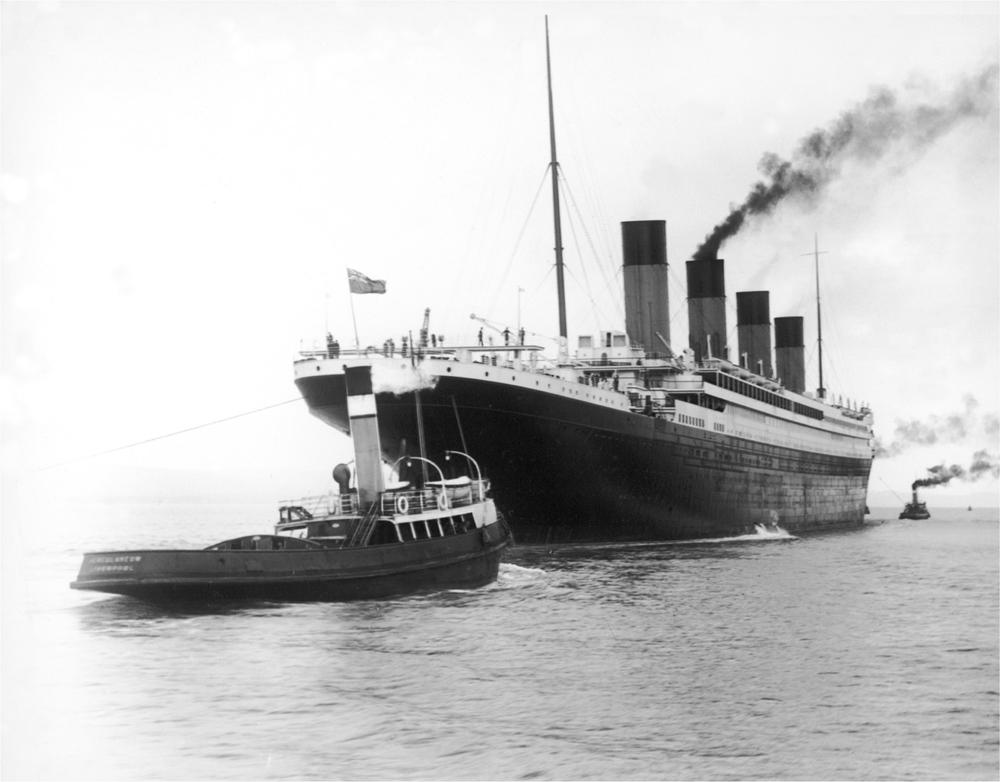
Nobody could have guessed that Titanic was leaving Belfast behind forever.
Today, 24 Belgrave Square, the Greco-Roman-styled mansion formerly known as Downshire House, is home to the Spanish Embassy. However, it is far more famous for that 1907 dinner party, during which the two esteemed chairmen, Lord Pirrie and Bruce Ismay, dreamt up Titanic and her sisters. The future of sea travel was in their hands and what they would conceive was undoubtedly a fine testament to the mutually beneficial relationship between a British shipping line and a Belfast ship-building company.
Three years later, an article in the Belfast News Letter described this relationship as one of the most interesting chapters in the history of our ship-building industry.
It was surely inevitable that Ismay, with IMM funding, and Pirrie would look to breach Cunards superiority and the answer was as obvious as it was simple: White Star Line needed new ships and these new ships needed to exceed the Cunard liners in size, speed and luxury. The two men went to work that very evening, making sketches and bestowing names that announced a new type of ship on the horizon: Olympic, Titanic and Gigantic. Of course, the consequences of that conversation would have huge financial requirements; that is, those three ships could only happen thanks to White Star Lines access to the considerable resources of the IMM.
NOBODY COULD HAVE GUESSED THAT TITANIC WAS LEAVING BELFAST BEHIND FOREVER.
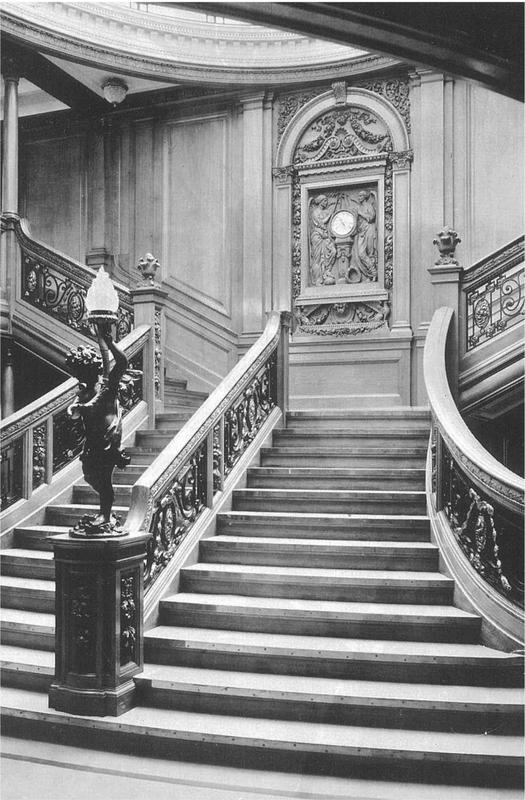
No image of Titanics Grand Staircase is known to exist. Pictured here the Grand Staircase in Olympic was of the same design; a replica of the one in Titanic can be seen at Titanic Belfast.
JP Morgan had made his desires clear, telling Ismay to build me the finest vessels afloat, and that is exactly what he got, not three years later, with Olympics launch on 20 October 1910, followed closely by her sister Titanics on 31 May 1911. Gigantic would be finally launched as Britannic, on 26 February 1914, to a very different world.
In a way, Titanic was initially in her elder sisters shadow, not receiving half the fanfare that had been afforded to the first of the White Star Line wonder ships but that would change. Made in the image of
Font size:
Interval:
Bookmark:
Similar books «Titanic»
Look at similar books to Titanic. We have selected literature similar in name and meaning in the hope of providing readers with more options to find new, interesting, not yet read works.
Discussion, reviews of the book Titanic and just readers' own opinions. Leave your comments, write what you think about the work, its meaning or the main characters. Specify what exactly you liked and what you didn't like, and why you think so.



